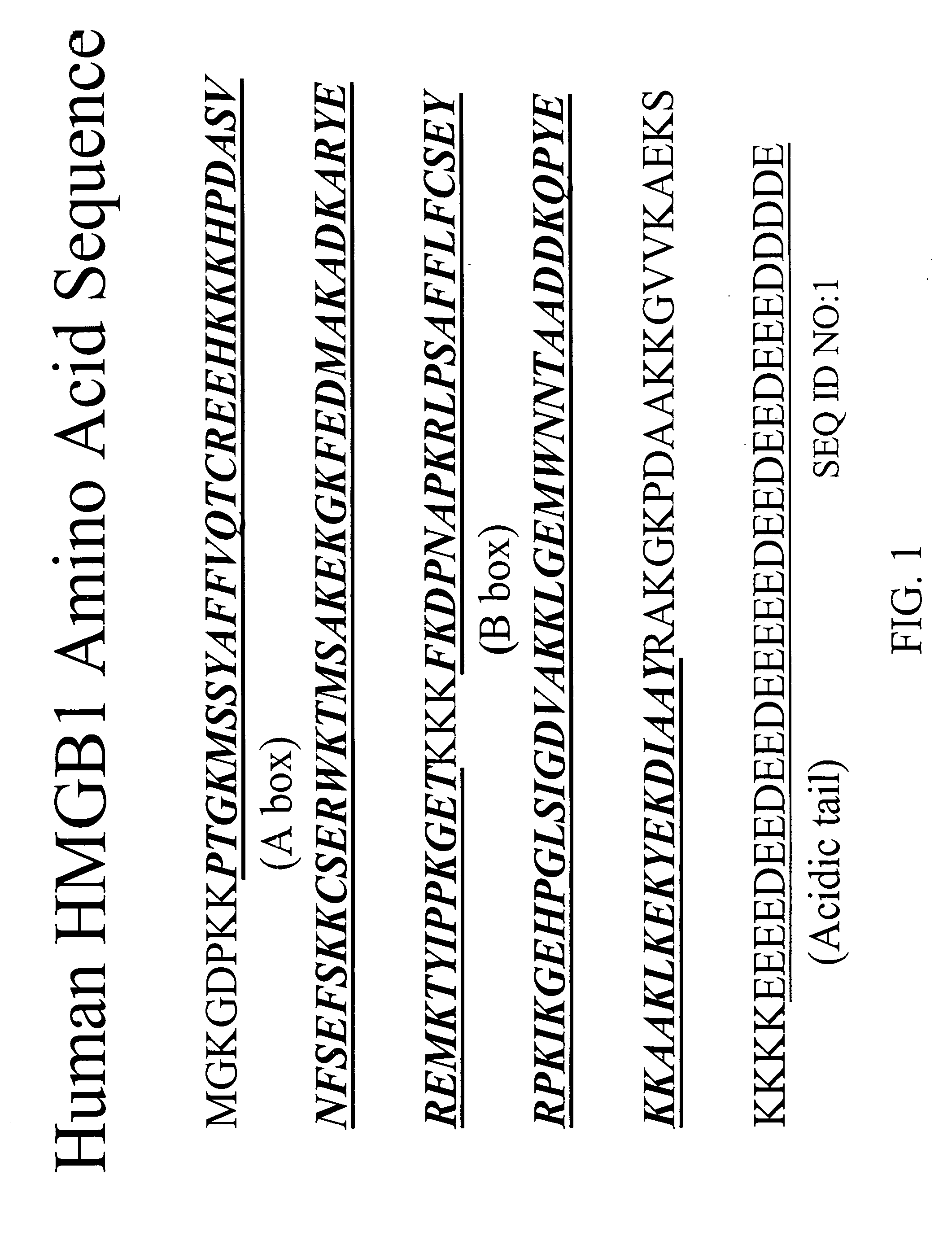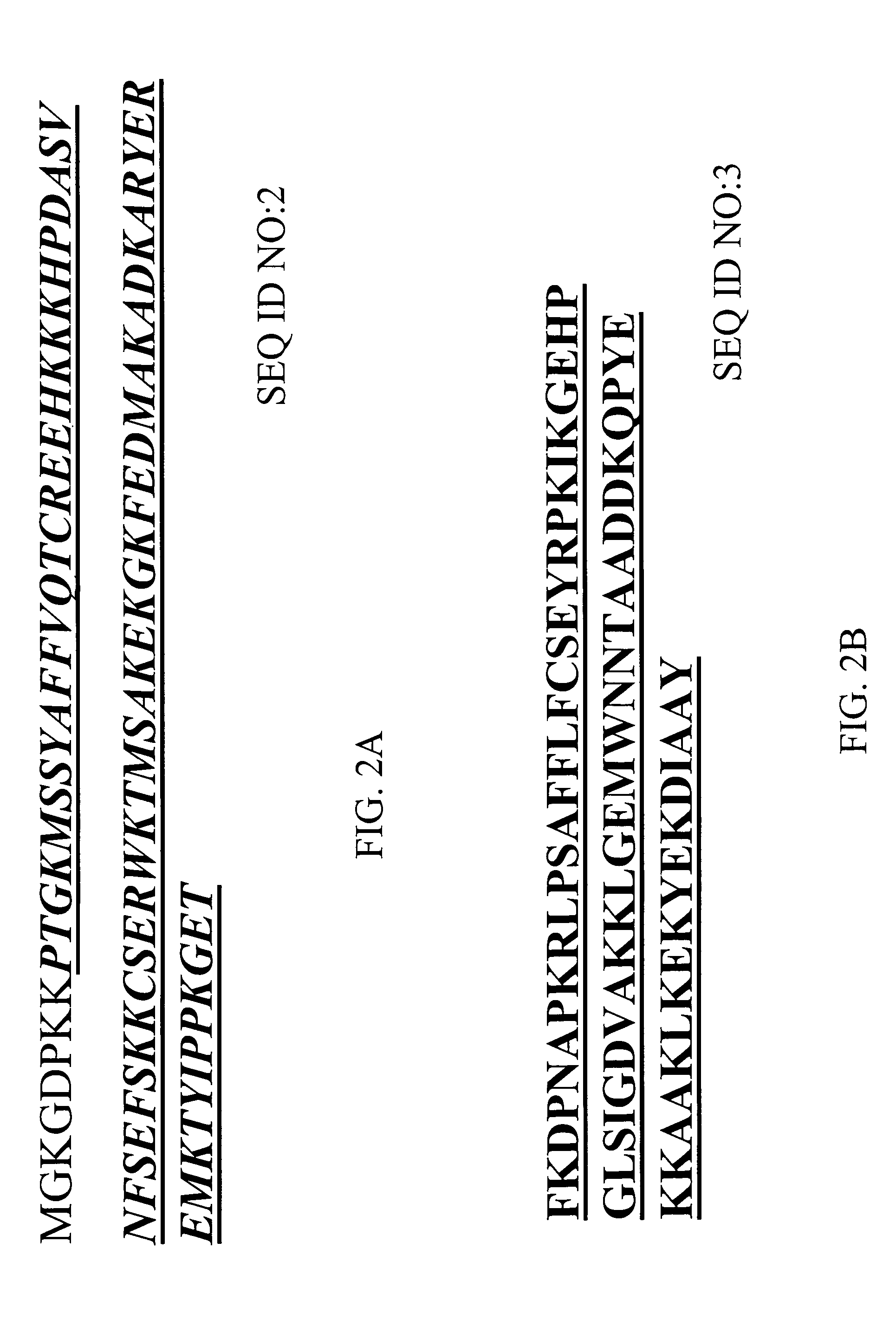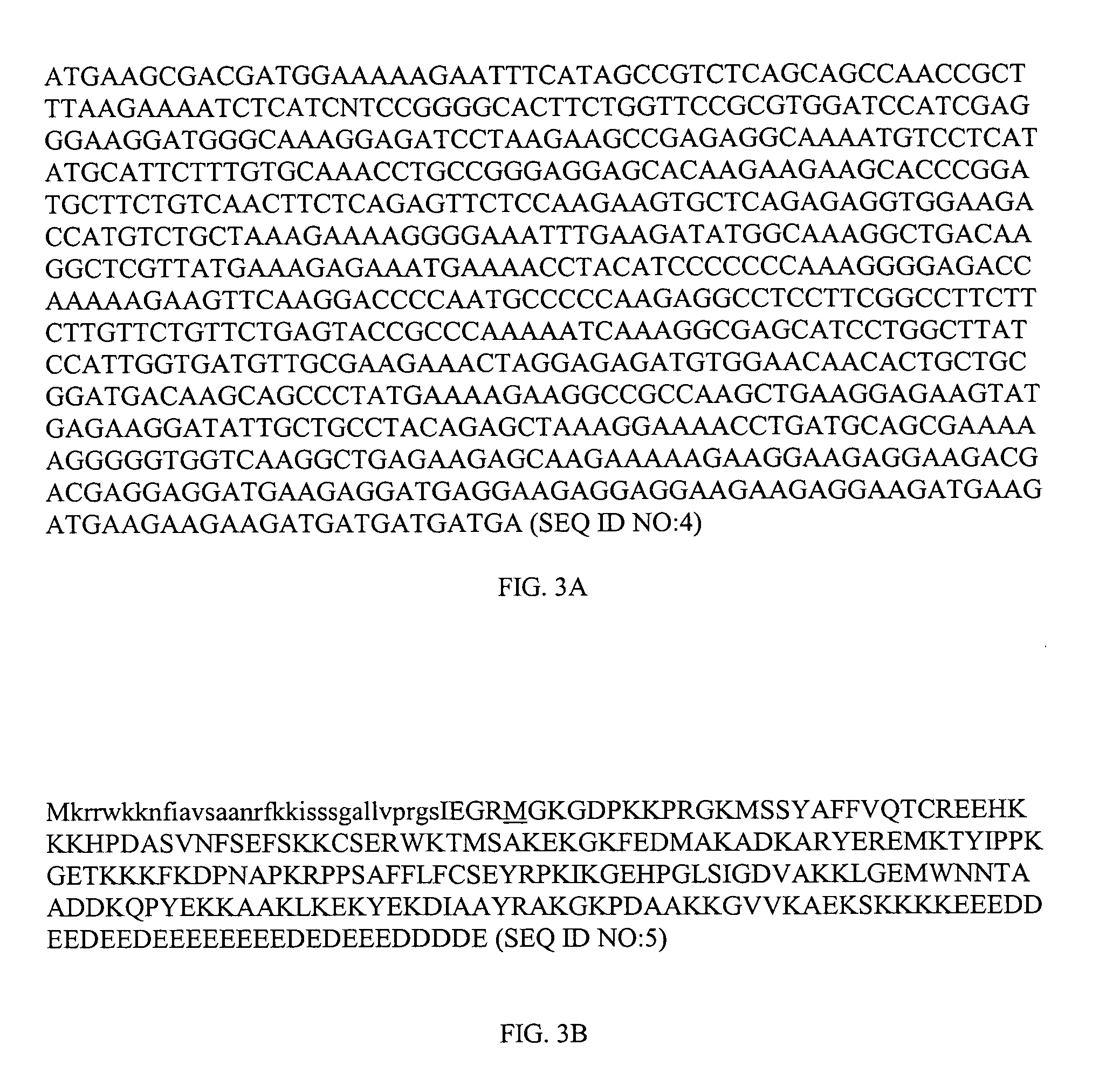Monoclonal antibodies against HMGB1
a monoclonal antibody and antibody technology, applied in the field of monoclonal antibodies against hmgb1, can solve the problems of elevated serum hmg1 levels that are toxi
- Summary
- Abstract
- Description
- Claims
- Application Information
AI Technical Summary
Benefits of technology
Problems solved by technology
Method used
Image
Examples
example 1
Materials and Methods
Generation of Monoclonal Antibodies to HMGB1
[0182] BALB / c mice were intraperitoneally immunized with 20 μg of recombinant CBP-Rat HMGB1 (CBP linked to amino acids 1-215 of rat HMGB1; nucleotide sequence of CBP-Rat HMGB1 is depicted as SEQ ID NO:4 and the amino acid sequence is depicted as SEQ ID NO:5 (see FIGS. 3A and 3B)) mixed with Freund's adjuvant at two-week intervals for 6 weeks. A final boost of 10 μg of the CBP-Rat HMGB1 in PBS was given intravenously after 8 weeks. Four days after the final boost, spleens from the mice were isolated and used for fusion. Fusion was carried out using standard hybridoma technique. The spleen was gently pushed through a cell strainer to obtain a single cell suspension. After extensive washing, spleen cells were mixed with SP2 / 0 myeloma cells. Polyethylene glycol (PEG) was added slowly, followed by media over a period of five minutes. The cells were washed and resuspended in DMEM containing 20% FCS and HAT, transferred to...
example 2
Identification and Characterization of Anti-HMGB1 Monoclonal Antibodies
[0203] A number of novel anti-HMGB1 monoclonal antibodies have been isolated and purified from immunizations with either recombinant full-length rat HMGB1(SEQ ID NO:4; FIGS. 3A and 3B) or with a B-box polypeptide of human HMGB1 (SEQ ID NO:3; FIG. 2B). A table summarizing characteristics (clone name, immunogen, isotype, purified antibody binding domain, and results of in vivo CLP assays) of these antibodies is depicted in FIG. 7.
example 3
Determination of Selectivity of Anti-HMGB1 Monoclonal Antibodies
[0204] Experiments (e.g., ELISA, Western blot analysis) to determine the selectivity of the HMGB1 monoclonal antibodies revealed that particular anti-HMGB1 monoclonal antibodies are able to bind to the A box portion of HMGB1, the B box portion of HMGB1 and / or the whole HMGB1 protein. For example, as depicted in FIG. 7, anti-HMGB1 monoclonal antibodies were identified that can bind to the A box of HMGB1 (e.g., 6E6 HMGB1 mAb, 6H9 HMGB1 mAb, 10D4 HMGB1 mAb, 6H9 HMGB1 mAb, 2G7 HMGB1 mAb, 2G5 HMGB1 mAb, 4H11 HMGB1 mAb, 7H3 HMGB1 mAb, 9H3 HMGB1 mAb). Other monoclonal antibodies were identified that bind to the B box of HMGB1 (e.g., 2E11 HMGB1 mAb, 3G8 HMGB1 mAb, 3-5A6 HMGB1 mAb, 9G1 HMGB1 mAb, 4C9 HMGB1 mAb, 1C3 HMGB1 mAb, 5C12 HMGB1 mAb, 3E10 HMGB1 mAb, 7G8 HMGB1 mAb, 4A10 HMGB1 mAb).
PUM
| Property | Measurement | Unit |
|---|---|---|
| concentration | aaaaa | aaaaa |
| concentration | aaaaa | aaaaa |
| volume | aaaaa | aaaaa |
Abstract
Description
Claims
Application Information
 Login to View More
Login to View More - R&D
- Intellectual Property
- Life Sciences
- Materials
- Tech Scout
- Unparalleled Data Quality
- Higher Quality Content
- 60% Fewer Hallucinations
Browse by: Latest US Patents, China's latest patents, Technical Efficacy Thesaurus, Application Domain, Technology Topic, Popular Technical Reports.
© 2025 PatSnap. All rights reserved.Legal|Privacy policy|Modern Slavery Act Transparency Statement|Sitemap|About US| Contact US: help@patsnap.com



